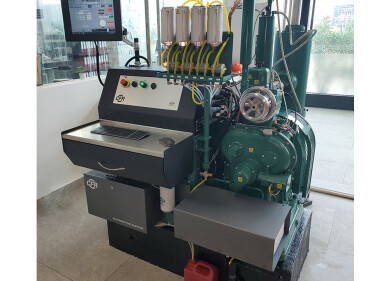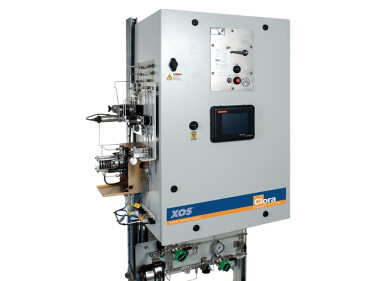Analytical instrumentation
Determining the Evaporation Residue of Fuels at the Highest Safety Level
Feb 14 2017
In contrast to other potentially dangerous setups, Anton Paar’s GUM tester provides the highest level of safety. By using a multi-functional head the user saves about 10 minutes of time with each measurement and thus several tens of thousands of euros/dollars per year.
Gum is a nonvolatile residue left after evaporation of aircraft fuels, motor gasoline, and other volatile distillates. The amount of gum present is an indication of the condition of the fuel. Large quantities of gum are an indicator of contamination of the fuel by higher boiling oils or particulate matter and generally reflect poor fuel handling practices. High gum content can cause induction-system deposits and sticking of intake valves.
The specification ASTM D1655 (Standard Specification for Aviation Turbine Fuels) allows the determination of the existent gum content of aviation turbine fuels either by the test method ASTM D381 or IP 540. In these test methods the instrument has to be prepared when it is already heated and, consequently, most of the instrument parts are hazardous for the operator.
In contrast to this potentially dangerous setup, Anton Paar’s GUM tester provides the highest level of safety. It has a multi-functional head which is specially designed for the safe and simultaneous positioning of all jet tubes. The position of the handle ensures that neither steam nor hot air is hazardous to the operator. The multi-functional head also enables the user to save about 10 minutes of valuable time with each measurement, which results in a saving of several tens of thousands of euros/dollars per year.
Anton Paar’s GUM tester is used to determine the amount of gum in fuels after specific test conditions in accordance with ASTM D381, ISO 6246, EN 6246, JIS K 2261, DIN 51784, FTM 791-3302, IP 131, and IP 540.
The test methods ASTM D381 and EN ISO 6246 require the use of steam as the evaporating medium for aviation turbine fuels and the use of air for testing motor gasoline. In contrast, the IP 540 method allows either air or steam as the evaporating medium for aviation turbine fuels.
During the test procedure a measured quantity of fuel is evaporated under controlled temperature conditions and a constant flow of air or steam. Therefore, the beakers containing sample have to be inserted into the instrument when this is already heated to temperatures up to 246°C. Due to the design of the multifunctional head of the Anton Paar GUM tester it is not necessary to assemble the conical jets to the hot surface of the instrument after insertion of the beakers. All conical jets can be lifted and lowered by one single turn to bring the conical jets and beakers into the working position.
The simultaneous positioning of the conical outlets not only enables a fast start of the measurement by a single turn but also offers a guided positioning to prevent incorrect assembling of the conical outlets.
The built-in AWAS (Advanced Water Absorbing System) ensures a safe withdrawal of condensed water from the sample beakers and also avoids uncontrolled steam eruptions. Other safety features include the over-temperature shutdown and the heat protection shield, which contribute greatly to safe operation.
The small footprint of the GUM tester means it can be used in a fume hood, which is very important since the sample and solvent vapours evaporated during the performance of the test procedure can be extremely flammable or combustible, and hazardous when inhaled. The evaporation bath must be operated with an effective exhaust hood to control such vapors and reduce the risk of thermal explosion.
For customised user flexibility, the GUM tester is available in two different versions. Depending on the analysed sample, there is a GUM tester model for tests with air supply and a high-temperature model (up to 280°C) with air and steam supply. For the pre-calibrated GUM tester there is a full range of calibration devices available, e.g. air volume test set, steam volume test set, and several reference thermometers. If required, various accessories can be provided: air compressor, steam generator, water demineralization apparatus, water examination kit, or regeneration salt pellets.
Digital Edition
PIN 25.6 Buyers' Guide
January 2025
Buyers' Guide Directory - Product Listings by Category - Suppliers Listings (A-Z) Articles Analytical Instrumentation - ASTM D7042: The Quantum Leap in Viscosity Testing Technology -...
View all digital editions
Events
SPE Hydraulic Fracturing Technology Conference and Exhibition
Feb 04 2025 The Woodlands, TX, USA
Feb 05 2025 Guangzhou, China
Trinidad and Tobago Energy Conference 2025
Feb 10 2025 Point Lisas, Trinidad
Feb 11 2025 Lagos, Nigeria
Feb 13 2025 Manama, Bahrain





















